#Castorocauda
Text
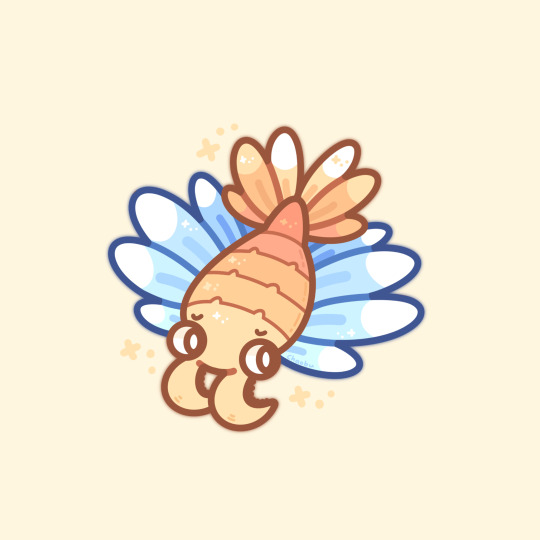
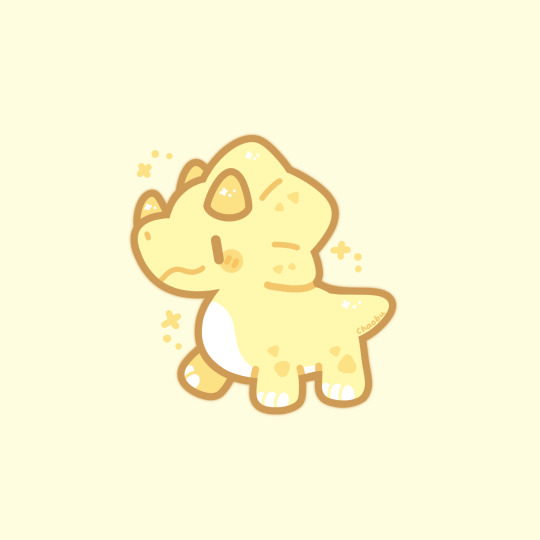


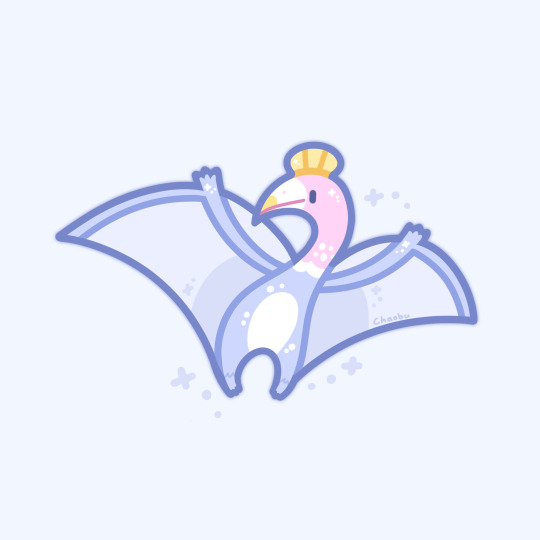

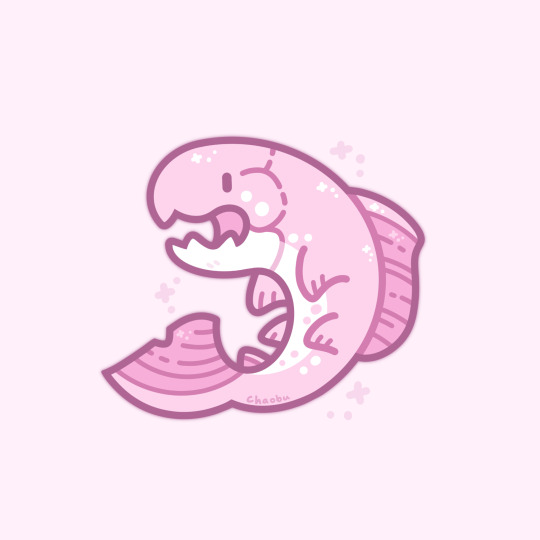

31 days of pastel paleo critters (17-24)!
17. Anomalocaris
18. Triceratops
19. Spinosaurus
20. Castorocauda
21. Quetzalcoatlus
22. Tiktaalik
23. Dunkleosteus
24. Juramaia
#paleontology#prehistoric animals#Anomalocaris#Triceratops#Spinosaurus#Castorocauda#Quetzalcoatlus#Tiktaalik#Dunkleosteus#Juramaia
921 notes
·
View notes
Text
December 20th
Box #20 in our count down is Attenborosaurus…
(more…)

View On WordPress
#advent#anchiornis#anurognathus#Asteracanthus#Attenborosaurus#Castorocauda#Christmas#coroniceras#countdown#Dakosaurus#dinosaur#Dysalotosaurus#europasaurus#Gnathosaurus#Guanlong#heterodontosaurus#illustration#Ischyodus#Lobolytoceras#Mamenchisaurus#Ostafrikasaurus#Rhomaleosaurus#Scelidosaurus#Volaticotherium#Yinlong
8 notes
·
View notes
Text
I love how much the first episode of Prehistoric Planet focused on pterosaurs and marine reptiles. Yes, Tyrannosaurus rex is cool and all but there is so much more to paleontology than dinosaurs and I'm glad this show made a bold move and showed us some of the animals that existed alongside dinosaurs and are just as fascinating as them.
Fingers crossed we'll get some Mesozoic mammals in one of the next episodes.
#I'd love to see Volaticotherium or Castorocauda#or perhaps even the tiny Hadrocodium#or as we fondly called it#the paperclip mouse#prehistoric planet#look I'm a mammal paleontologist#we rarely get any content#I'd love to see my little fellas represented
328 notes
·
View notes
Note
There's been some debate over exactly when synapsids evolved ear pinnae and if the earlessness of monotremes is an ancestral or derived trait, but is it possible that it correlates with the evolution of the mammalian ear bone that was derived from their jaw?
There isn't a direct osteological correlate for the pinnae, so it's difficult to pinpoint exactly when it first appeared in mammals. But (based on specimens with preserved soft tissue) the docodont Castorocauda and haramiyidans like Maiopatagium also lacked pinnae. We first see pinnae within theriiforms, as far back as Spinolestes. Although we can only conclusively determine the presence/absence of pinnae with soft-tissue fossils, and soft tissue preserves very rarely, it's not impossible that they could have evolved earlier than that and were lost in monotremes. But we don't have any reason to think that they did.
This could be cleared up, theoretically, with genetic or evo-devo studies on the development of monotreme and therian ear soft tissue. AFAIK that hasn't happened yet.
21 notes
·
View notes
Note
Molly, did you know there's a mammal that lived in the Jurassic period named Castorocauda? It has sharp teeth, eats fish, has webbed feet, waterproof fur and a flat tail like a beaver, lays eggs like a platypus and is the ancestor of the otter.

molly: oh wow
2 notes
·
View notes
Text
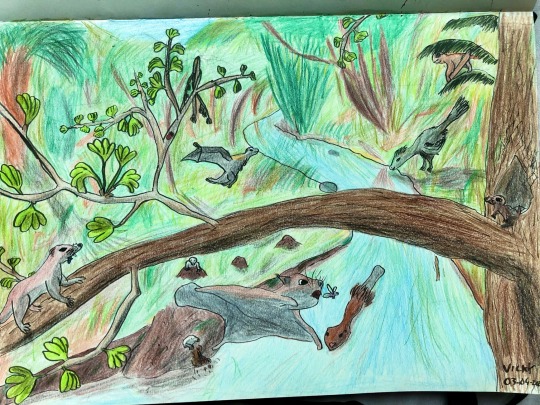
Here’s some of the amazing diversity of Mammaliaformes of Jurassic China. Volaticotherium glides in pursuit of a tasty bug. Agilodocodon, an excellent climber, already got one and brings it back to its young in the trees. Some Docofossors are digging up the lawn. Castorocauda, the largest mammaliaform of the Mesozoic, is going for a swim. With the exception of Volaticotherium, these are all Docodonts, a group closely related to the crown group mammals, having branched off a little before the monotremes did. I wanted to show off how much more diverse and interesting Mesozoic mammals were than we usually imagine. They did a lot more than cowering from dinosaurs and being eaten by them!
That said, Jurassic China also had some really cool dinosaurs.Yi qi, the actual real-life dragon, is going for a flight. A truly enormous Xiaotingia is having a drink. Please mentally halve the size of that big boy, I accidentally drew it way too large, that is a little birdie that should be easily outsized by Castorocauda. Finally, being neither a dinosaur nor a mammal, the not at all confusingly named pterosaur Cascocauda is sitting in the trees getting ready for a flight.
#mammaliaform#volaticotherium#castorocauda#docodonta#agilodocodon#docofossor#eutriconodonta#yi#yi qi#scanseriopterygid#xiaotingia#avialan#anchiornithid#cascocauda#pterosaur#anurognathid#mesozoic mammals#jurassic#paleoart#palaeoart#my art#i'm seriously kind of annoyed with how big i made xiaotingia#it feels like it's stealing the thunder of the mammals#especially castorocauda#i'm too used to drawing dromaeosaurs#anchiornithids are teeny tiny compared to them#dinosaur#mammal
39 notes
·
View notes
Photo

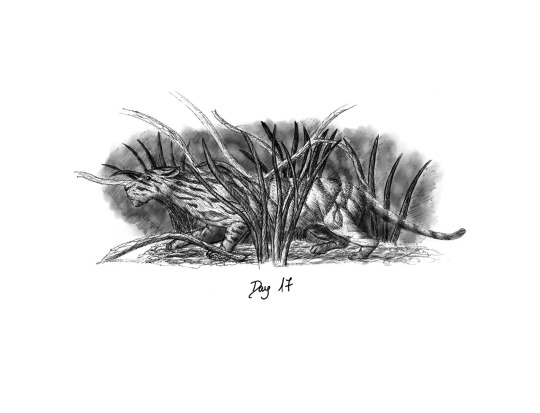



Instead of doing inktober this time, I’ve been doodling Sciartober prompts. Not all of them, and I started on day 11, got carried away with one of them, and I have no idea when I’m going to finish it, but here’s what I’ve done so far.
So, day 11 - fish. Or in my case, a happy Castorocauda trotting home with a nice, big, juicy one.
Day 17 - invisible. Hoplophoneus trying to dissapear from view.
Day 18 - in the ocean. Basilosaurus, because of course it is .
Day 19 - mammal. Fruitafossor, probably the earliest known relative of therian mammals.
Day 20 - tiny. Hadrocodium, cause it tiny. It was an early Jurassic mammaliaform that was pretty cloe to crown group mammals. I kind of screwed up the thumb, and for some reason the shading looks much worse than it does in person. I also made two versions of this, but I decided to go with this one, because while I prefer the hand in the first on, it had really stark, dramatic light and shadow that detracted from the Hadrocodium. I should have predicted that drawing in a room lit only by small desk lamp will do that. I also managed to kill my back and left arm drawing these. Because of course I did.
#synapsida#synapsids#sciartober#october art thing#early mammals#ink drawing#traditional art#palaeoblr#paleoart#palaeoart#sciart#whales#castorocauda#hoplophoneus#fruitafossor#hadrocodium#basilosaurus#i actually did more than two prompts this time around#wow#who even am i
103 notes
·
View notes
Photo

Castorocauda and Chunerpeton
This is the first full painting I've finished since 2017 and hopefully just the start of a series of new paintings. I purposefully built this compositions around focusing on the more obscure elements of Castorocauda anatomy aside from its tail, which I feel is what usually gets all the attention in artwork concerning the animal. The plants featured in this painting are Wielandiella a divaricate bennettitalean from the same formation as Castorocauda and Chunerpeton.
Link to this painting on my artstation
https://www.artstation.com/artwork/bKrXea
27 notes
·
View notes
Text

Been watching a ton of science videos again lately and with my obsession with marine life and proto mammals specifically, a Twitter user suggested castorocauda as my ancient fursona species
I honestly dig it
14 notes
·
View notes
Photo


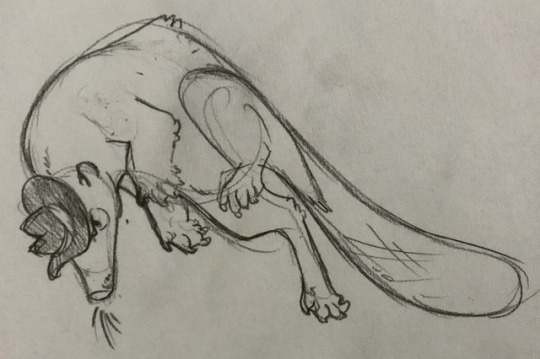


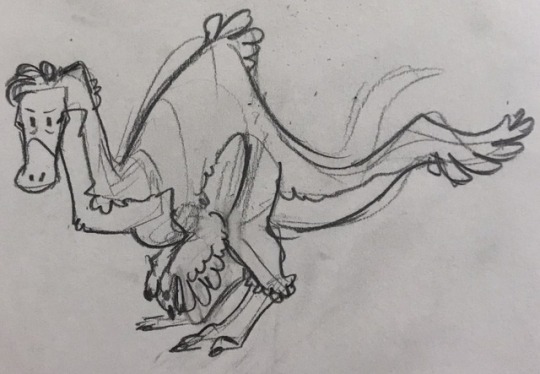


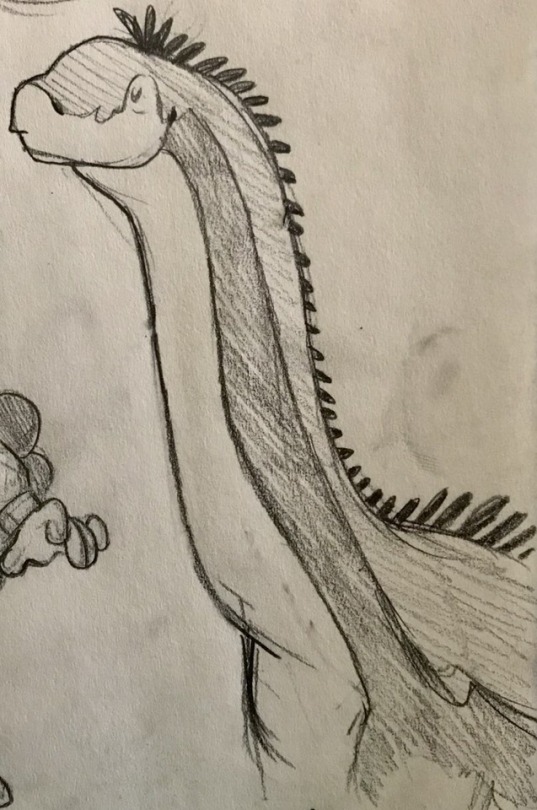

a whole mess of pnf mesozoic au doodles! genus & such in the captions.
#art#pnf#isabella garcia shapiro#francis monogram#perry the platypus#heinz doofenshmirtz#phineas flynn#ferb fletcher#phineas and ferb#dinosaur#pterosaur#hoo boy.#let's go.#dilophosaurus#maiasaura#castorocauda#deinocheirus#pteranodon#dawndraco#geosternbergia#camarasaurus
134 notes
·
View notes
Photo

“Ancient mammals” (2010)
Fruitafossor windscheffeli
Castorocauda lutrasimilis
Eomaia scansoria
Just some early mammals ^^ I’ve always felt fascinated by them, as well as by non-mammalian synapsids.. I should go ahead and draw some of the latter!
#Fruitafossor windscheffeli#Castorocauda lutrasimilis#eomaia scansoria#early mammals#extinct species#nothofagus-obliqua#the losers (2010)#chestofmemories
15 notes
·
View notes
Photo
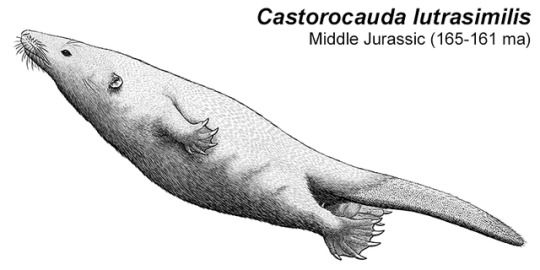
Month of Mesozoic Mammals #06: Going for a Swim
Castorocauda
While some docodonts like Agilodocodon were going up into the trees, another branch of the group was specializing into semi-aquatic habits instead.
Castorocauda is known from the Middle Jurassic of China (165-161 mya), represented by an exceptionally preserved fossil showing soft tissue and hair impressions. About 40cm long (1′4″), it would have lived in a wetland environment and was well-adapted for swimming, with a flattened scaly beaver-like tail, webbed toes, and a coat of dense fur very similar to that of modern mammals, made up of both guard hairs and underfur.
Its strong forelimbs suggest it was capable of digging burrows, like modern platypus, and its sharp backwards-pointing teeth indicate a diet of slippery prey such as fish and worms.
It was also one of the earliest known mammals with (possibly venomous) spurs on its ankles. This feature is only seen today in monotremes, but seems to have been an ancestral trait common to all early mammals that was later lost in the lineage leading to marsupials and placentals.
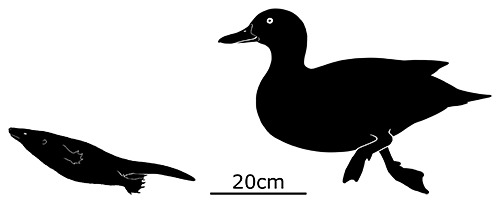
#science illustration#month of mesozoic mammals 2018#paleontology#paleoart#palaeoblr#castorocauda#docodonta#mammaliaformes#mammaliamorpha#cynodont#therapsid#synapsid#stem-mammals#art#spurs#convergent evolution#lutrinization
331 notes
·
View notes
Text
Merry Christmas!
the final box in our count down is Massospondylus…
(more…)

View On WordPress
#advent#anchiornis#anurognathus#Asteracanthus#Attenborosaurus#Castorocauda#Christmas#coroniceras#countdown#Dakosaurus#dinosaur#Dysalotosaurus#europasaurus#Gnathosaurus#Guanlong#heterodontosaurus#Holophagus#illustration#Ischyodus#Kentrosaurus#Lobolytoceras#Mamenchisaurus#Massospondylus#Ostafrikasaurus#Razanandrogobe#Rhomaleosaurus#Scelidosaurus#Stenopterygius#Volaticotherium#Yinlong
1 note
·
View note
Photo




A Snapshot in Time part 2 - The Daohugou Biota
In the first post of this pair (see: http://tmblr.co/Zyv2Js1lLwcex) we discussed the Jehol formation in China, the best example of an early Cretaceous environment, preserved like Pompeii by a series of volcanic eruptions pushing dead animals into lakes and burying them in the ash that fossilised them.
While argument rages over the connections between the organisms from these two lake sediment sequences, separated by a crucial 30 million years in time during which birds separated from dinosaurs (amongst other significant events), they do occupy the same stratigraphic column, and had similar conditions of deposition, fossilisation and preservation. However researchers can't agree yet on which species characterises which biota, nor on where the line between them lies (see the saga of lumpers and splitters at http://on.fb.me/1PpsZnU)
Deposited during an interval spanning roughly 164-158 million years back, it is made up of lake sediments interspersed with volcanic rocks from pyroclastic flows, much like the Jehol formation. Unlike the latter, it has been folded and mixed up by erosion and volcanic activity, testifying to more active tectonics than when the later beds were deposited in similar geographic settings. There has been some controversy over their actual age, though most agree on the window quoted above using arguments from biostratigraphy (where fossils are in the stack) shows the rocks to be earlier. The latest radioactive dates also support the accepted window. Like the Jehol many soft tissues, fur, feathers and others have been perfectly preserved by the fine grained ash.
Many early mammals have been found here, including early aquatic creatures and the first gliding squirrel type critter. The trees included conifers and ginkoes. The earliest birds were just recently found here, as researcher hoped, giving a glimpse into their first days on Earth, just after their divergence from dinosaurs (the subject of my third upcoming post).
Together these two formations make up the only detailed record of a land ecosystem of this period anywhere, and their unique nature promises many exciting discoveries in the future. More new creatures will turn up, and the comparison between these two excellently preserved and similar ecosystems geologically 'photographed 30 million years apart in time will reveal many new insights into evolution at one of its critical phases for several major clades.
Loz
Image credit: Graphic: Julia Molnar Salamander Chunerpeton: Sullivan et al, referenced below Sinornithosaurus: Dave_NGMC91 Graphic 2, the early mammal Castorocauda: Nobu Tamura http://bit.ly/1zMUki0 http://bit.ly/1hJIgl7 http://bit.ly/1Pp4Yx5
#Science#geology#paleontology#fossil#fossils#daohugou#biota#research#jurassic#formation#the earth story#fossilfriday#paleoblr
80 notes
·
View notes
Note
Did the common ancestor of monotremes and therians have external ear flaps?
We don't know. The earliest direct evidence for external ear flaps (=pinnae, auricles) in mammals is in Spinolestes, which is a stem-therian. Monotremes have, at best, incredibly reduced pinnae. Stem-mammals, including Castorocauda, apparently lacked pinnae. We don't know where between the (Castorocauda+mammals) clade and the (Spinolestes+therians) clade pinnae evolved, and if monotremes have secondarily reduced/absent pinnae (and a case could be made that would be good for the lifestyles of living monotremes) or if they just never had them.
15 notes
·
View notes
Note
did castorocauda lay eggs?
7 notes
·
View notes